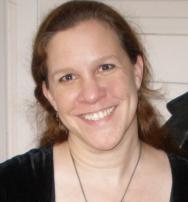Public and private golf courses today are on a mission: to attract more people from a wider variety of demographics to the sport. One way to do this, they believe, is by making golf easier and more fun. Going forward, an increasing number of courses are doing this by making the holes about four times larger than traditional golf cups: 15 inches, or about as wide as a dinner plate. The easier mark reduces the skill required in putting, and speeds up the game.
There is a strategy here: to reboot the image of golf as the pastime of senior citizens and corporate executives, and stem the receding tide of players. According to the National Golf Foundation, about 400,000 Americans quit playing golf last year, and the sport has lost about five million players in the last 10 years, the Associated Press has reported. If the trend keeps up, the sport will continue to bleed players, which will drain the revenues of the nation’s golf courses. Cost may have something to do with it – stagnating wages have meant more and more players cannot keep up with rising green fees and cart rental – but the sport is also working against negative perceptions and a reputation for being slow and stodgy. Golf’s popularity is precipitously declining among players under 35.
Jim Buenzli, owner of the Golf Academy at Terra Cotta in Crystal Lake, Illinois, told the Associated Press that the cost, time and difficulty of golf hold little appeal for tech-savvy millennials, many of whom have grown up with video games such as "Tiger Woods PGA Tour.”
"Many kids would rather play on the simulator," he said. "They really like that. The challenge for golf is to bring technology to the course. That's what the younger generation is all about."
By using the larger cups and perhaps moving up the tees, golf courses can make the sport easier and more attractive for young people and beginners. Many courses that have implemented the new larger holes – about 100 courses across the country, according to the Associated Press – have tried to do it in a way that won’t annoy golf purists. They have installed the cups on the back of greens, out of the way of traditional players.
Boone Creek Golf Club in McHenry, Illinois is one of the clubs that is currently testing the larger holes. Dave Mikolaitis, the club's head golf professional and general manager, said the larger holes have generated excitement, sped up the pace of play and saved players a lot of strokes. Going forward, however, it remains to be seen whether the trend is a gimmick or will succeed in opening up the sport to a wider array of demographics.

